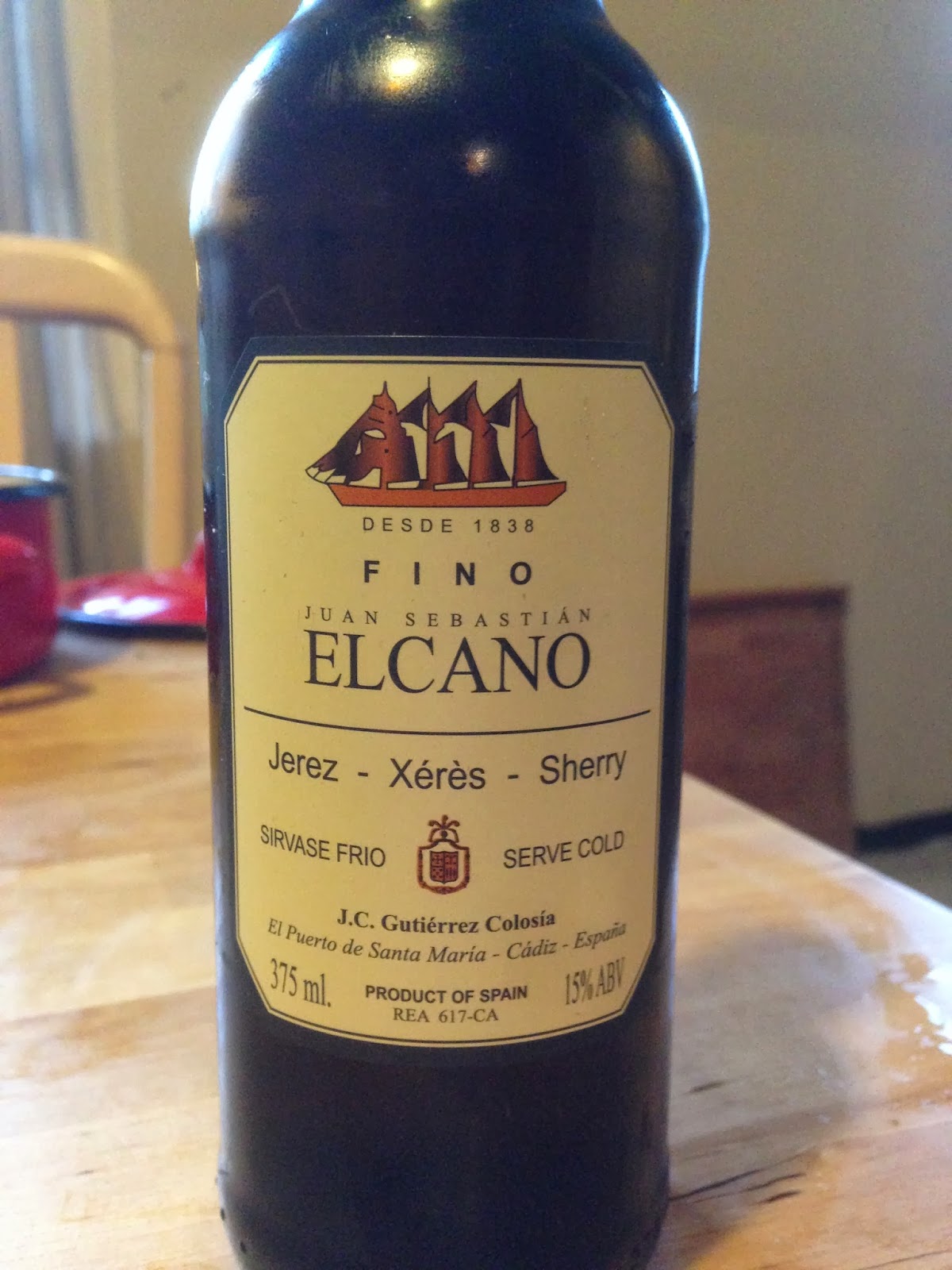When I started cooking, I realized early on that if I read a
recipe the food would turn out fine but I wouldn’t remember how I made it. On the other hand, if I attempted to
make something without a recipe and something went wrong (which it pretty much
always did), I would have a very vivid memory of what not to do in the future, and I would have a better understanding of the importance of each step. Trial and especially error are
necessary steps in developing instincts in the kitchen.
It is with this spirit in mind that I want to start the
“Haphazard Wine Pairing” series on this blog. I don’t know much about pairing food and wine, and I’d love
to know more. I know a handful of
classic pairings, but I don’t really know why they work. And with at least half the meals I cook, I don’t feel confident I could pair the food with the right wine. I could easily study more of the
classic wine pairings, but that seems like a sort of circuitous way of getting
around to having good wine pairing instincts. Instead I’m going to make some haphazard guesses at what I
think might work, trying to avoid obvious choices, and take note of what works
and what doesn’t. Hopefully, in
doing so, I’ll also come up with some interesting, out-of-the-box
pairings. Anyway, here goes:
For my first truly autumnal dish of the season I wanted to
make a roast chicken. My version
was very simple with brussel sprouts, new potatoes, carrots, celery root,
cippolini onions, garlic, thyme and a lot of butter. The only kicker is that I knew I wanted to use lemon to
lighten the dish up a bit (It’s an autumnal dish that’s not quite ready to
admit summer’s over). I put a few
thin slices of lemon underneath the skin of the chicken, and squeezed the rest
of the lemon over everything. We
also had some sautéed shitake mushrooms on the side and an arugula salad with a
lemon-based dressing.
Finding a pairing was actually surprisingly difficult. My first instinct with a roast chicken
is red burgundy, or maybe a lighter loire cab franc, but I felt that something
about the tannins in a red wine and the lemon would be problematic. Maybe Beaujolais could work, but I had
no reason to think it would do anything more for the dish than just work. Most delicate white wines, I felt,
would get lost in the rich, earthy, savoriness of the dish, and frankly I’m not
a fan of most big, rich white wines.
I decided to go with Fino Sherry.
Gutierrez Colosia El Puerto de Santa Maria Juan Sebastian Elcano Fino
Sounds a bit whacky but hear me out. I think most people tend to pair sherry
with exotic foods because it comes from an exotic place, and there’s definitely
something to be said for that approach, but to me, the flavors of Sherry remind
me of comfort food. All the
savory, nutty, mushroomy flavors that come from the flor should pair well with
the rustic earthiness of the dish.
At the same time, the acidity should cut the richness, and the lemon shouldn’t
be an issue. That was my thinking
at least…
The result:
This pairing worked well. Actually, really well.
To be honest, I was kind of hoping it wouldn’t work so I could say, “now
I know to never pair sherry with celery root” or something like that, but the
wine elevated the simple flavors of the dish and made it all feel more light,
fresh, and, well, exotic. And when
enjoyed with food, the Sherry showed this green apple fruity aspect I didn’t
notice before. It made the wine
feel more giving, a little less intimidating with its abundance of nutty,
briney, secondary type flavors. I
will admit I kind of cheated because I’ve experimented with Fino Sherry as a
table wine before, and it seems to pretty much work with everything. This just further confirms my
theory.
Lesson learned: Sherry is fuckin awesome. Drink it when eating roast chicken or
basically anything else.
With any luck, maybe my next “haphazard wine pairing” will
be a flaming disaster. We can only
hope…



